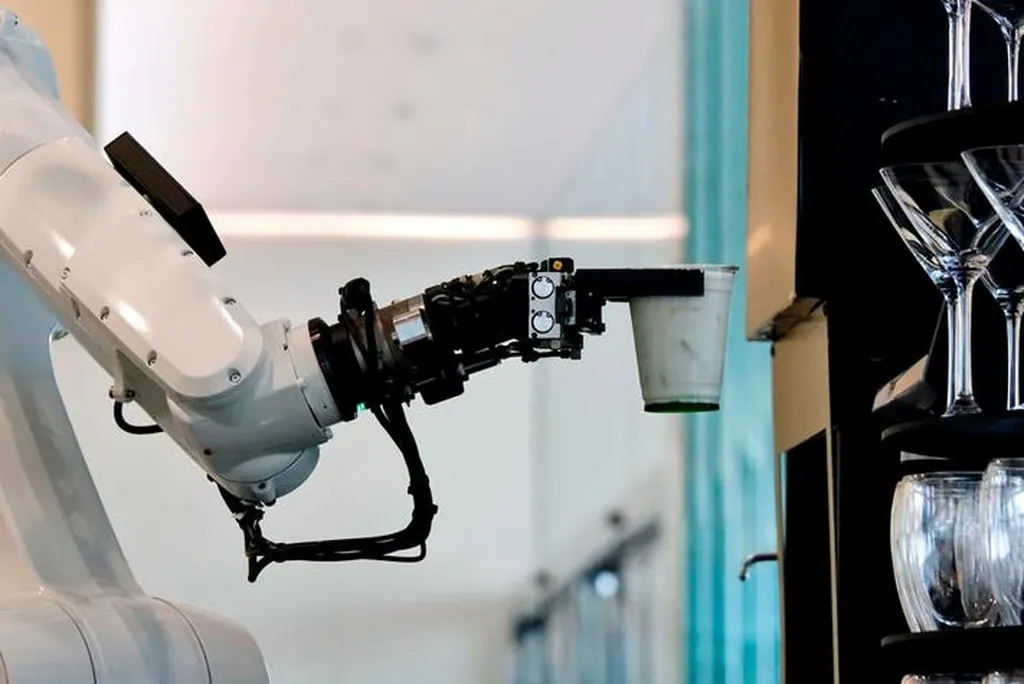In the quest for smarter manufacturing processes, researchers have turned to advanced machine learning techniques to optimize industrial operations. A recent study published in the journal *Materials Research Express* (translated from Arabic as “Expressions of Materials Research”) presents a novel approach to enhancing the precision of machining processes, with significant implications for industries reliant on high-quality metal components, including the energy sector.
The research, led by Abdulmajeed Dabwan of the Industrial Engineering Department at Taibah University in Medina, Saudi Arabia, focuses on improving the surface roughness of AISI 1045 steel during dry machining. Surface roughness is a critical factor in manufacturing, affecting the performance, durability, and efficiency of machined components. By achieving a smoother surface, industries can enhance the lifespan of their products and reduce maintenance costs.
Dabwan and his team employed a hybrid approach, integrating artificial neural networks (ANN) with genetic algorithms (GA), particle swarm optimization (PSO), and an Adaptive Neuro-Fuzzy Inference System (ANFIS). This combination allows for more accurate predictions and optimizations of surface roughness, which is particularly valuable in industries where precision is paramount.
“The integration of these advanced algorithms enables us to predict and optimize surface roughness with a high degree of accuracy,” Dabwan explained. “This not only improves the quality of the final product but also reduces the time and resources required for trial-and-error adjustments.”
The study involved experimental trials using a full factorial design, which systematically varied cutting parameters to determine their impact on surface roughness. Analysis of variance (ANOVA) was used to quantify the influence of each parameter. The researchers found that the ANFIS model outperformed both the ANN-PSO and ANN-GA algorithms in predicting surface roughness, achieving a relative error of less than 3%.
One of the key findings was the identification of optimal process parameters: using tool-type wiper carbide inserts, a speed of 80 meters per minute, a depth of cut of 0.5 millimeters, and a feed rate of 0.045 millimeters per revolution. These parameters resulted in a surface roughness of 0.202 micrometers, a significant improvement over conventional methods.
The implications of this research extend beyond the laboratory. In the energy sector, where components must withstand extreme conditions, the ability to predict and optimize surface roughness can lead to more reliable and efficient machinery. For example, smoother surfaces on turbine blades can reduce friction and improve energy efficiency, while optimized machining processes can lower production costs.
“This research represents a step forward in the integration of machine learning and manufacturing processes,” Dabwan noted. “By leveraging these advanced algorithms, we can achieve higher levels of precision and efficiency, ultimately benefiting industries that rely on high-quality metal components.”
As industries continue to embrace the fourth industrial revolution, the adoption of smart manufacturing techniques will be crucial. The work of Dabwan and his team highlights the potential of machine learning to revolutionize manufacturing processes, paving the way for more efficient and cost-effective production methods.
In the broader context, this research could inspire further exploration of hybrid machine learning models in various industrial applications. The energy sector, in particular, stands to gain from these advancements, as the demand for high-performance components continues to grow. By optimizing surface roughness, industries can enhance the performance and longevity of their products, ultimately contributing to a more sustainable and efficient future.
As the field of machine learning continues to evolve, the integration of these techniques into manufacturing processes will likely become more widespread. The research published in *Materials Research Express* serves as a testament to the potential of these advanced algorithms, offering a glimpse into the future of smart manufacturing.

